
Wooden house by Schlyter/Gezelius Arkitektkontor
Large folding doors open this woodland house outside Stockholm onto a decked terrace that is shaded by a folding fabric canopy.
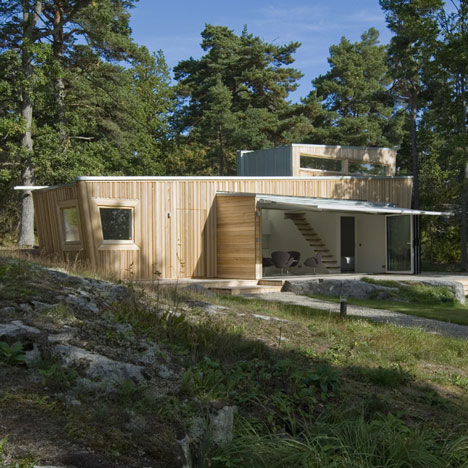
The house by Swedish studio Schlyter/Gezelius Arkitektkontor is entirely clad in larch, milled into striped patterns by local carpenters.
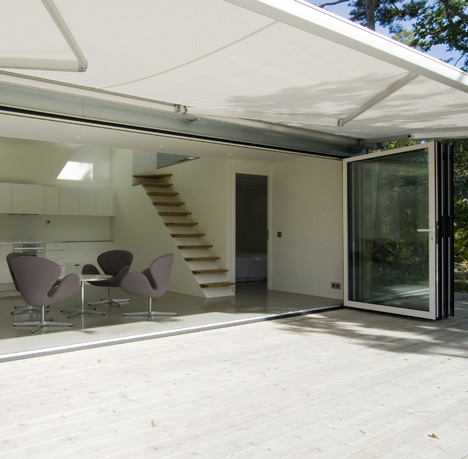
Inside the pine-framed building, walls are lined with stucco and have rounded corners.
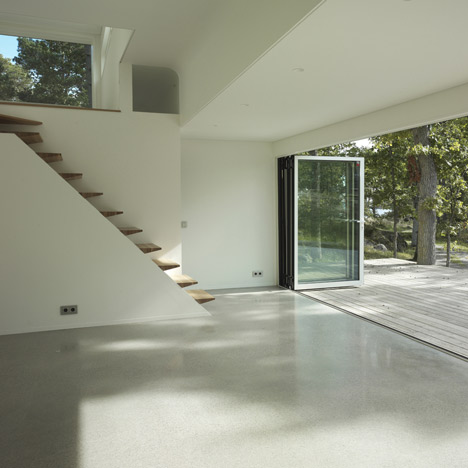
A timber staircase in the central kitchen and dining room leads to a first-floor loft with oversized windows.
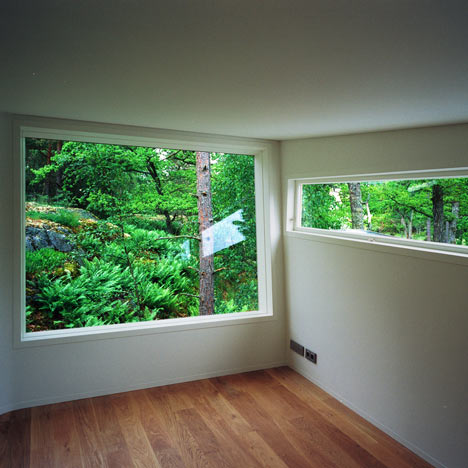
Other timber-clad woodland houses in Sweden to have been featured on Dezeen include a tree-top hotel cabin and a triangular hut for campers - see more projects in Sweden here.
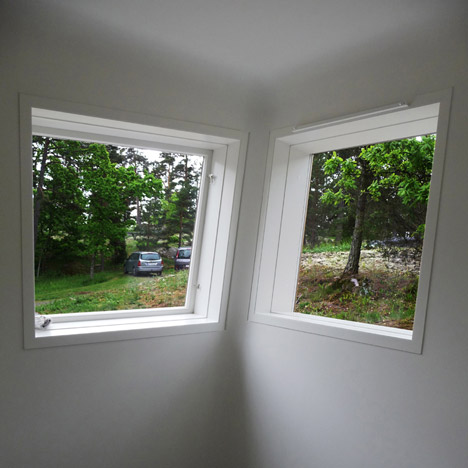
Photography is by Luc Pages.
Here are some details from project architect Camilla Schlyter:
Background, low impact no waste
During the last 25 years I have worked with and studied how the use of computers and software have affected architecture and the physical landscape. First I was in raptures about the possibilities. Though this is still true there are other implications that are all the more worrying. The waste of space in today´s interiors and exteriors, the lack of respect for the natural landscape, the global use of non-renewable materials, and how all of this in various ways is linked to our digital tools.
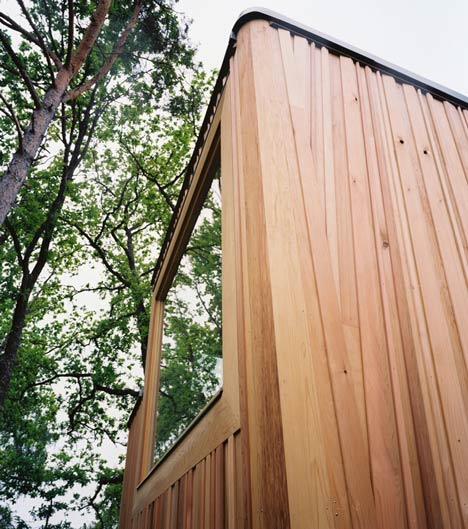
Some reflections on this subject is in an essay (made possible with the help from a large grant from a Swedish architect organization, ARKUS) called “the architect´s digital tools and there implications on the physical landscape”.
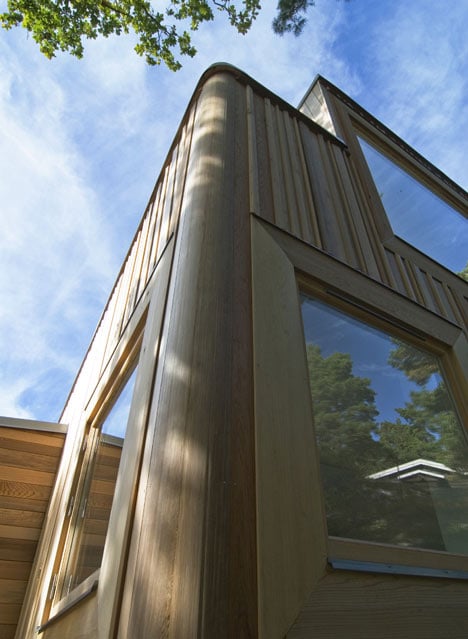
Facts, low impact dwelling
Built: fall 2009, South west outside Stockholm. Close to the Baltic sea.
Builder/contractor: Allerskog & Krantz AB, by Åke Krantz and Kenneth Kling. Local contractors.
Carpentry shop: Dahlqvist Snickeri AB, Local carpentry
Client: Private
Engineer: Konkret Rådgivande Ingenjörer i Stockholm AB, by Olle Norrman
Architect: Schlyter / Gezelius Arkitektkontor AB, by Camilla Schlyter
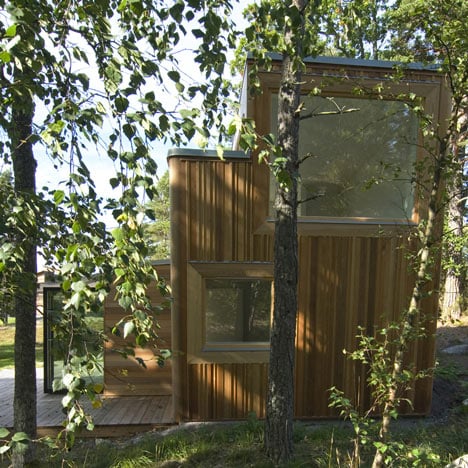
On the construction of the dwelling
- the use of local contractors and carpentry shops
- the use digital files for milling.
- frequent contact architect, contractors and client
- a tent was set up on the site and the construction of the dwelling could continue without too much regard to the weather conditions.
- every part of the building was designed specifically for this project. A local carpentry shop, just minutes away from the site, milled the façade panels, the rounded corners, the ledges, the windows, the doors, the staircase, the kitchen fittings, the fitted closets, fitted bunk beds and some more items.
Site
- tried to use the conditions of the site with respect for yesterday and tomorrow =make as little impact as possible on the site, plan pluming, electricity etc.
- find optimal shelter from the wind and find the best balance of sunlight to increase the inflow of the sun and decrease energy losses of the wind
- no stone blown up
- no trees felled
- the undercurrents of the water flow taken into account
- combine the conditions of the landscape with the needs of the family-obtain a close connection between outside and inside
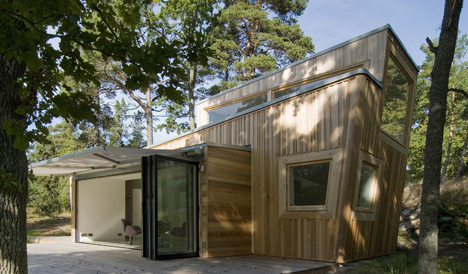
Construction/framework: pine wood
Insulation: cellulose fiber
Inner walls: wood boards, putty and paint, the rounded corners in the interiors where made by a master of stucco.
Windows, doors: pine wood
Façade: larch wood, milled in different designs
Heating: air-heat pump system
Roof: roofing felt with the thinnest metal as a top layer. The roof is designed to work as one big gutter. No other gutters needed.
Wood
- using wood that was forested with sustainable methods
- the builders and I were very happy when building, the building site smelled wonderful, and we all cried when it was finished!
- wood products is fine in regard to health reasons for the builder, the user and the environment
- wood degrades into earth
- wood coming from a local source will work excellent when being used locally
- wood does not require much energy when retrieving and processing
- it will be easy to change and exchange parts
- it was easy to custom make designs in wood
- 80% of the land area is covered with forest, forest is increasing not decreasing, wood is a renewable rescore, traditional knowhow on building in wood, traditionally a large industrial production based on wood as resource
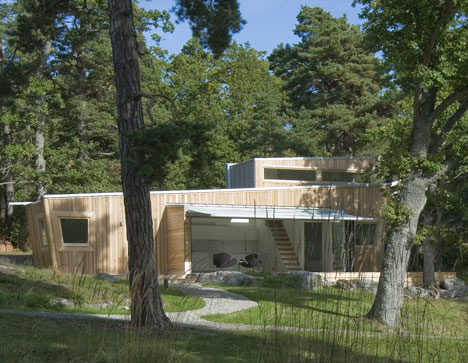
Plan
- create diagonals
- let the fine boundary between spaces be slightly prolonged.
- try to use architecture to expand space, without expanding the physical space or physical volume!
- create possibilities to see but not be seen, to hear but not be seen, to be together but alone etc.
Digital tools
- using the digital tools to calculate the use of building material in order to create a minimum of waste. All that was left for me as a keepsake was a small 150 mm piece of façade panel!
- use them to optimize design and to create dialog between client, contractors and architect.
- use them to create an open process, but not wasting time and money on elaborate photorealistic perspectives, instead use them for quick sketches and sitting together by the computer.
We are currently developing a multifamily housing project constructed of wood, where the façade can change in harmony with the landscape and the micro climate. To increase the inflow of the sun and decrease energy losses of wind etc. A project circling around the cultivation both in- and outside the house. This house is part of a large development in the countryside outside Stockholm the plan is submitted to the planning process.